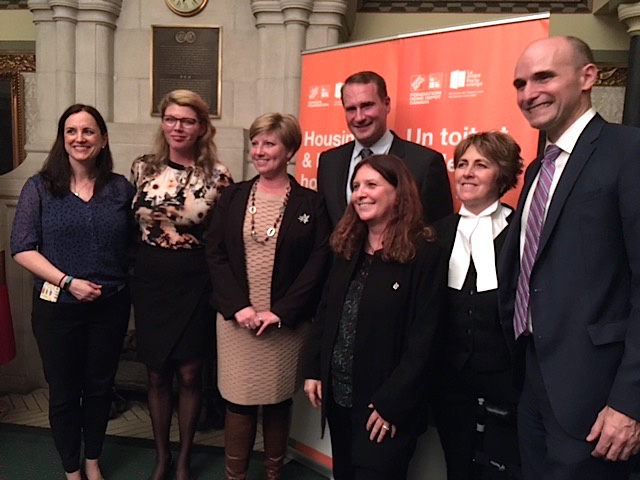I’m a sucker for the holidays as it is: the beautiful twinkling lights, holiday carols, and even cheesy holiday rom-coms. This holiday season is even more special somehow, and reflecting on the first year of A Way Home Canada is an important part of that. What I’m most grateful for is the approach we are taking to making a real impact on the issue of youth homelessness known as Collective Impact. Now I know I’ve written about Collective Impact in previous blog posts, but it is fundamental if we want to prevent and end youth homelessness in communities while simultaneously shifting the policy and funding context to support those communities.
Key to our Collective Impact approach is working with funders as partners. The Catherine Donnelly Foundation, who I lovingly refer to as “the radical nuns from the prairies,” are convening a table of corporate and philanthropic partners to contribute to A Way Home’s strategy, funding base, government relations efforts, and to even start working toward shared outcomes and specific funding streams that focus on prevention. This is innovative stuff! One of the funders at the table, the Ontario Trillium Foundation, has even embarked on an ambitious program to support local and provincial Collective Impact initiatives.
Here’s what these kinds of relationships can look like in action. On November 15th one of our partners in this Collective Impact approach, the Home Depot Canada Foundation, hosted a reception on Parliament Hill to report that they achieved their initial 3-year investment goal of $10 million to support national and local efforts to end youth homelessness and to announce an additional $10 million commitment over the next 2 years. This event attended by more than 60 Members of Parliament from across party lines and associated meetings with elected and senior officials in Ottawa with A Way Home, the Home Depot Canada Foundation, and the Canadian Observatory on Homelessness provided a critical forum to release the results of Without a Home - the largest national study on youth homelessness ever done in Canada. Guess what? The results of the study point overwhelmingly to the need to prevent young people from ever becoming homeless, and if they do become homeless, ensure it is brief, rare and one time. We were able to walk into those events and meetings as a unified front comprised of the community sector, researchers and the corporate sector with an invitation to all orders of government to join us in our shared vision.
So what does 2017 and beyond look like for A Way Home? We’ve named five strategic priorities upon which to focus our collective efforts as a coalition:
- Identify, develop, research and build evidence in policy and program models that support the shift to prevention and appropriate models of housing and supports.
- Develop partnerships to integrate policy and program model learnings into other youth focused systems of care (Child Intervention, Youth Justice, Mental Health and Addictions).
- Support and facilitate systems planning (communities, regions and provincial/territorial) (processes must include those that can influence the systems that drive young people into homelessness).
- Service provider/sector shift to prevention (led by the National Learning Community on Youth Homelessness hosted by A Way Home).
- Knowledge mobilization, public engagement and government relations to inform sound public policy and investment.
Just to circle back, how can we deliver on such an ambitious agenda? We will do it together, and Collective Impact provides a frame to support and guide our efforts.
I hope your holidays are filled with rest, love and joy.
This post is part of a monthly series that follows A Way Home's progress as we create real change on the issue of youth homelessness. On the second Wednesday of every month, join us for an update from A Way Home's Executive Director, Melanie Redman.


